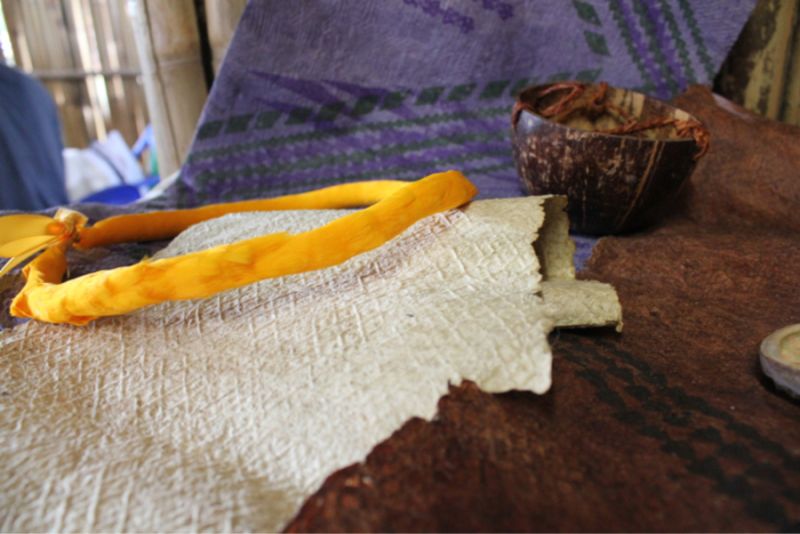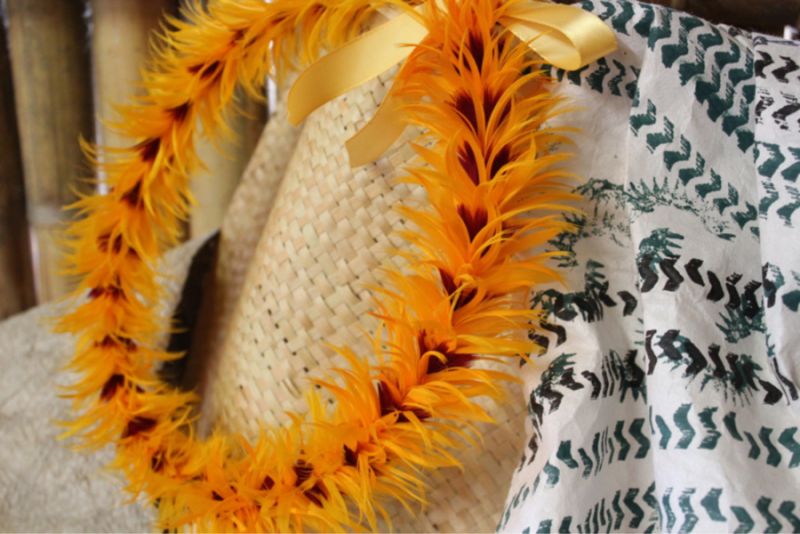Digital Collections
Celebrating the breadth and depth of Hawaiian knowledge. Amplifying Pacific voices of resiliency and hope. Recording the wisdom of past and present to help shape our future.
Kapalai‘ula de Silva [Ho‘okahua]
November 2013
During the time of Makahiki, there was great emphasis placed on the importance of ho‘okupu and ‘auhau. Objects of great value were given by maka‘āinana to their ali‘i and akua. It was believed that this annual practice of giving, an integral phase of the harvest season’s ceremonies, would encourage the continued growth and fertility of our lands and resources.
Beginning on the day of Lā‘aukūkahi in the month of Welehu, various ho‘okupu from each ahupua‘a were collected by the konohiki of that area and included kapa, pa‘ūpa‘ū, and malo, to name just a few. Dogs were also given in great abundance. These ho‘okupu were accepted over the course of three days and nights, while prayers were offered in the heiau to honor Lono. At the conclusion of this three-day period, these ho‘okupu were distributed out to the akua, kāhuna, chiefly retainers, and warriors.
On the day of Kāloakūkahi, the akua loa began its circuit of the island to collect another series of gifts, this time in the form of ‘auhau. These ‘auhau were laid in heaps at each ahupua‘a marker, and included puaʻa, kapa, moena, ʻupena, olonā, and hulu manu from prized native birds such as the mamo and ‘ō‘ō. The akua loa would remain at the ahupua‘a marker until the tax assessors were satisfied with the quantity of objects given. If any district failed to contribute an appropriate ‘auhau to Lono, the ahupua‘a was plundered until the land was stripped bare.
Each district took great pride in their resources and craftsmanship, producing objects of the finest quality. Indeed, Makahiki was not a time to hoard all of the best things for oneself. If an ahupua‘a was home to highly skilled lau hala weavers, that area might tailor their array of offerings to showcase only the best in mats, baskets, and hats. Another ahupua‘a may have been known for its exceptional fishing grounds and experts, and thus would have had a large number of fishing tools and ocean resources as offerings.
As the season of Thanksgiving quickly approaches, let us consider what we may have to offer others, and let us be ever mindful of ways in which we can practice our own forms of ho‘okupu, however big or small.
Historical information contained in this article comes from the works of Joseph M. Poepoe, a noted Hawaiian scholar of the 19th century. His writings on Makahiki were published in the Hawaiian language newspaper Ka Hoku o Hawaii in 1929.
GLOSSARY
Makahiki – a time of rest and celebration
hoʻokupu – offerings or symbolic gifts
ʻauhau – taxes
makaʻāinana – citizenry
aliʻi – chief
akua – god
kupu – to sprout or grow
Lāʻaukūkahi – 18th night of a Hawaiian lunar month
Welehu – traditional Hawaiian month, equivalent by some accounts to today’s November/December
konohiki – steward of an ahupuaʻa, a resource manager
kapa – bark cloth
malo – loin cloth
paʻūpaʻū – sleeping kapa
heiau – place of worship
Lono – one of the four major gods brought from Kahiki
kāhuna – priest or expert
Kāloakūkahi – 24th day of a Hawaiian lunar month
akua loa – “the long god,” a staff used during Makahiki symbolic of Lono
ahupuaʻa – land division
puaʻa – pig
moena – mat
ʻupena – net
olonā – a plant whose fiber is used to make strong cordage
hulu manu – feathers
lau hala – pandanus leaves

photo credit: Kīhei de Silva
Typical offerings during Makahiki might include kapa (bark cloth) or other handiwork.

photo credit: Kīhei de Silva
Kūkaʻa lau hala, rolls of pandanus leaves ready for plaiting, were also a valuable hoʻokupu.

photo credit: Kīhei de Silva
Feathers were highly prized raw materials often used in aliʻi adornments and other symbols of aliʻi status.